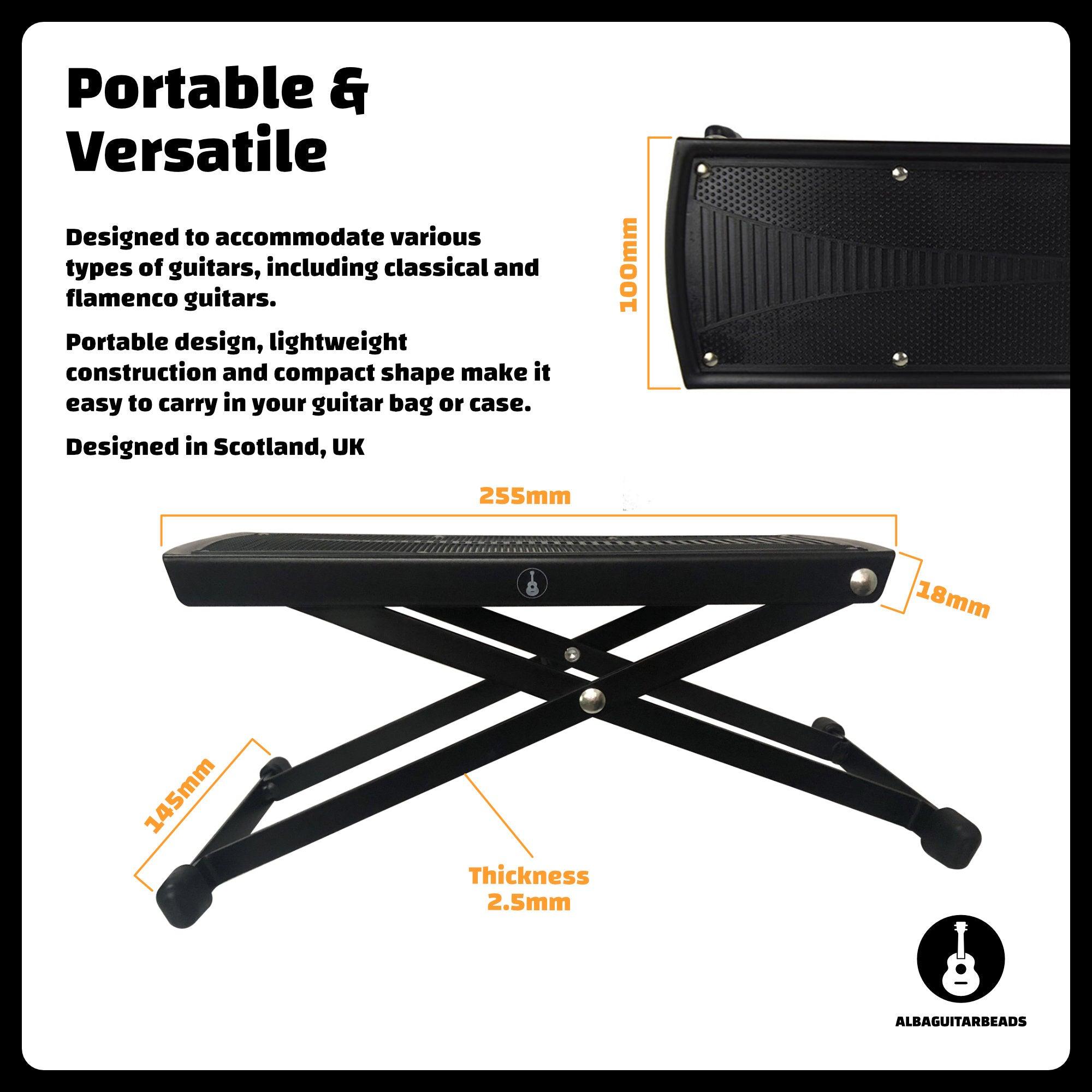The Story Behind Alba GB Classical Guitar Cases
We started designing our cases almost five years ago. With help from luthiers and guitarists, we spent those years exploring different shapes and ideas to find a design that truly works.
After years of testing and feedback, we arrived at a shape that’s both tough and visually appealing. The design process was guided by one question: how can we create a case that looks like a timeless Italian classic but is also strong and built with modern technology?

We didn’t just look at traditional guitar case designs. We turned to nature. Engineers have studied birds to design planes. Leonardo da Vinci studied animals to create new machines. That inspired us to explore shapes found in nature, like the egg, which rolls when dropped to protect its shell, or the turtle shell, built to take pressure and hits without damage.
In our lab tests, we tried different materials and shapes, and what we found is simple: the shape matters just as much as the material. The final part of the challenge was to get the weight and dimensions right. We didn’t want something heavy or bulky. We wanted a case with modern styling, compact dimensions, and real strength.
With input from master luthiers, a design studio in Milano, and respected guitarists from around the world, we created something that feels fresh, looks beautiful, and stands up to real-world use.
When it comes to keeping your classical guitar safe, the material of the case is just as important as the padding inside it. At Alba GB, we’ve put years of experience into designing both carbon fibre classical guitar cases and our new line of fiberglass classical guitar cases, with one goal in mind: real protection for real players.
Classical guitarists often ask: What’s better—carbon fibre or fiberglass? The answer depends on how and where you use your guitar case. Each material brings a different set of strengths, and the shape of the case matters too.
Whether you're carrying your instrument to daily lessons, flying for concerts, or storing it at home, this guide will help you understand which option fits your lifestyle and why Alba GB cases are trusted by guitar players worldwide.
Read Also: Double Top vs. Traditional Top Classical Guitars: Construction and Tone
Carbon Fibre Classical Guitar Cases

Alba GB’s carbon fibre classical guitar cases are built with high-performance carbon weave and aerospace-grade resin. Carbon fibre is known for its ultra-light weight and extreme rigidity. It’s used in everything from race cars to space tech, and for good reason—it’s incredibly strong and surprisingly light.
Our carbon classical guitar cases are made for guitarists who need a case that feels light in hand but holds strong against impact.
These cases weigh less than fiberglass models and are ideal for those who travel often or need to carry their instrument for extended periods. The rigidity of carbon fibre offers excellent crush resistance, keeping the guitar safe from outside pressure.
Carbon fibre is a stiff material, and to overcome this, to absorb shock in the same way as fiberglass, we have created a rounder shape with virtually no sharp angles.
If dropped or hit on any round spot, it would avoid a crack, which can compromise protection over time. That’s why our new carbon fibre cases are praised by players who prioritize weight and strength but carry their guitars with extra care.
Fiberglass Classical Guitar Cases: New from Alba GB
Our new line of fiberglass classical guitar cases offers a different kind of protection. Fiberglass is slightly heavier than carbon fibre but offers more flexibility and higher impact absorption.
It spreads the force of a hit across the shell, reducing the risk of cracks and helping to protect the guitar inside, even after repeated knocks.
Each Alba GB fiberglass classical guitar case is moulded from a custom-blended glass fiber sheet and resin formula.
The result is a strong outer shell that performs well under stress. These cases are perfect for students, teachers, and touring players who need a reliable case that can handle daily wear and tear.
Fiberglass also holds up better over time in extreme climates and can absorb more punishment without showing damage. If you need a tough, dependable case at a more affordable price than carbon fibre, this new line delivers.
Read Also: Classical Guitar Armrest: Comfort, Protection, and Superior Sound

Why Case Shape Matters
While material plays a big role in weight and durability, the shape of the classical guitar case matters too. A well-designed shape helps distribute impact and adds structural strength. That’s why our new fiberglass cases come with a rounder, more compact profile that reduces weak points and helps keep weight down, even when using fiberglass.
Read Also: How Plastic Guitar Beads Improve Classical Guitar’s Sound
A sleek, contoured case avoids unnecessary bulk while protecting the instrument at all the key contact zones. The rounded edges help absorb shocks better than flat-panel designs. That shape makes all the difference in how the material performs under pressure—fiberglass or carbon.

Comparing Weight and Strength
If weight is your top concern, our carbon fibre classical guitar cases are the lightest option. If impact resistance and flexibility are more important, our fiberglass classical guitar cases are the better choice. Both options are far more protective than soft cases or wood-based hard cases.
Alba GB carbon fibre cases: ultralight, stiff, premium protection. Alba GB fiberglass cases: durable, impact-absorbing, budget-friendly.
Read Also: The Evolution of Classical Guitar Supports: Steadiness, Innovation
Both types are lined with premium padding, finished with solid hardware, and sealed to keep out moisture. Every Alba GB classical guitar case is built for real-life use, not just showroom looks.
Fiberglass vs Carbon Fibre: Which Classical Guitar Case Material Performs Better?

When designing a case to protect a classical guitar, choosing the right material is more than just a technical decision; it affects the case’s strength, durability, and long-term performance.
At Alba GB, we work with two main materials: fiberglass and carbon fibre. Both are reliable and high-performing, but they behave differently under pressure. Each has its own strengths depending on how the case is used.
Carbon fibre is widely known for being one of the strongest and lightest materials available. It's used in aerospace, motorsports, and high-performance cycling for a reason—it delivers high strength with very low weight.
Our carbon fibre classical guitar cases take full advantage of this. They offer an incredibly stiff shell that resists bending and external compression. This makes them an excellent choice for musicians who travel often and want to carry the lightest possible case without compromising protection.
Read Also: Plastic Guitar Beads vs Metal Guitar Beads
The rigidity of carbon fibre gives it a clear benefit when it comes to crush resistance. When pressure is applied to the outside of the case, the shell holds its shape and keeps the guitar safe.
While it's true that carbon fibre doesn’t absorb impact in the same way as fiberglass, we’ve designed our carbon fibre cases with a rounded shell profile to reduce the risk of cracks.
This shape helps distribute force more evenly, minimizing stress points and protecting the case from damage in the first place. It also reduces the likelihood of fractures caused by localized shocks.
Because carbon fibre is a premium material, it comes at a higher cost. But that cost reflects what you're getting: a professional-grade case that combines lightness and strength with a refined, clean appearance.
For many players, that blend is exactly what they’re looking for in a top-level classical guitar case.
On the other hand, fiberglass offers a different kind of protection. It's slightly heavier, but more flexible, which allows it to absorb and distribute impact more efficiently.
Rather than concentrating the force in one area, the material spreads it across the shell. This means that if the case is dropped, the impact is softened and less likely to affect the guitar inside.
Read Also: Carbon Case for Classical Guitar: Style, Protection and Comfort for Musicians on the Go
Fiberglass also performs well under repeated stress. It’s able to take knocks and bumps without showing damage or weakening. This makes it a reliable option for guitarists who handle their cases daily or take them on the road.
Over time, fiberglass maintains its shape and strength, even when subjected to repeated handling in less-than-ideal conditions.
Both carbon fibre and fiberglass classical guitar cases are made to meet real-world demands. That’s why we offer both, depending on what you need most: the unmatched lightness and strength of carbon fibre, or the dependable impact resistance and flexibility of fiberglass.
At Alba GB, we’ve worked closely with our factory partners, who bring over 50 years of experience in guitar case building. Their craftsmanship has helped us refine the way each material is used, so whichever one you choose, you’re getting a case that reflects our attention to detail and our understanding of what guitarists need.

Read Also: Metal Guitar Beads: Better Tone, Sustain, and Playability
We’ve tested many materials and case shapes over the years. The truth is, both fiberglass and carbon fibre deliver excellent protection. They simply do it in different ways.
For those who value a strong, lightweight feel and a premium finish, carbon fibre is the right choice. For those who want long-lasting flexibility and shock absorption, fiberglass is ideal.
No matter which direction you choose, every Alba GB classical guitar case is built with the same goal: to protect your instrument with confidence, from the inside out.
How the Carbon and Fiberglass Cases Are Made
The process of building Alba GB classical guitar cases starts with raw material transformation. Whether carbon fibre or fiberglass, the goal is the same—to create a protective shell that holds its shape and strength through years of use.
Fiberglass begins as melted glass. It’s extruded through fine filters to create thin strands, which are then woven into a cloth or laid into a mat. This material is flexible and can be molded into curved shapes. To form the structure of a classical guitar case, these layers are bonded together using a catalyzed plastic resin.
Once set, the result is a shell that balances flexibility and toughness. It’s slightly heavier than carbon fibre but handles shock very well, making it ideal for cases that face constant handling.
Read Also: Arm Sleeves: A Deeper Look into Their History, Purpose, and Professional Use
Carbon fibre starts with carbon atoms bonded into long chains, spun into strands thinner than a human hair. These are twisted into threads and woven into sheets, like cloth.
To create a carbon fibre case, these sheets are shaped in a mold and bonded with resin. When cured correctly, the result is an incredibly rigid shell—stronger than steel by weight, yet lighter than fiberglass. This makes it a popular choice for players who prioritize low weight and sleek design without giving up protection.
Although the materials differ, the attention to detail is the same. Every Alba GB case is carefully built to make the most of each material's strengths, using tested production methods to ensure long-term performance.
Read Also: How Important Is Nail Care for Classical Guitarists?
At Alba GB, our focus has always been clear: to protect the musical instruments. That means designing classical guitar cases that go beyond standard materials and shapes.
Our carbon fibre classical guitar cases are perfect for light travel and solid protection. Our new fiberglass line offers smart design, great durability, and excellent value.
Whichever case you choose, your guitar will be ready for the road ahead. Explore our range of carbon classical guitar cases and fiberglass classical guitar cases today at AlbaGB, and carry your instrument with confidence.






Leave a comment
This site is protected by hCaptcha and the hCaptcha Privacy Policy and Terms of Service apply.